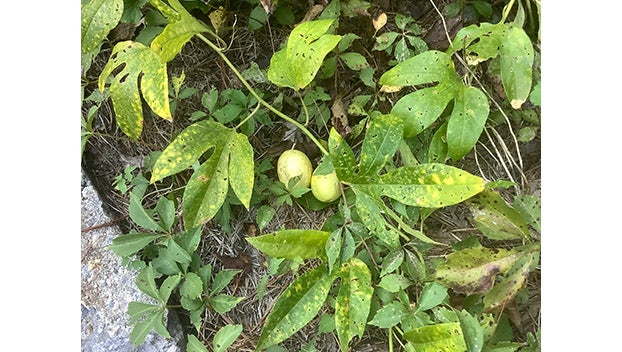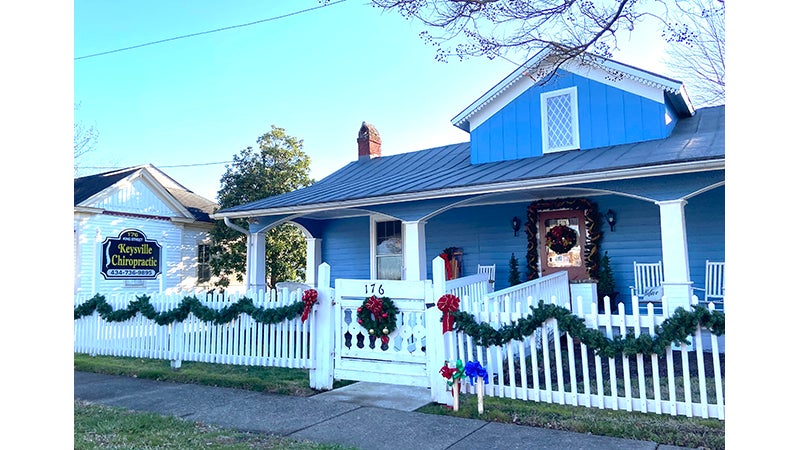Vines and more vines that’s the plan
Published 1:17 pm Sunday, April 3, 2022

- (Photo by Stella Payne) End of season deciduous Virginia Creeper and Passion Vine intertwined.
|
Getting your Trinity Audio player ready...
|
By Stella Payne
Virginia Master Naturalist
It is time to give native vines more attention. Virginia Creeper, Purple Passionflower and Caroline Jessamine, arrived in my yard on their own and do very well with little help from me. I have taken them for granted. They are useful work horses and deserve more praise.
Caroline Jessamine, (Gelsimium sempervirens), is my robust kid for vines. Showy but not too vigorous. It’s at the side of the mailbox, in tubs, and on the fence. In the spring, this evergreen has attractive, fragrant, bright yellow, trumpet-shaped flowers. The flowers attract hummingbirds and swallowtail butterflies. It has no serious disease or insect problems. A pleasant, “well-behaved” vine to live with and deer resistant. A keeper even though all parts of the plant are poisonous if eaten.
Virginia Creeper, (Parthenocissus quinquefolia), I also like. Some folks don’t. Maybe because it is too vigorous. A useful ground cover and great for erosion control. This deciduous vine has yellowish, tiny, inconspicuous flowers in May-June, followed by berries. The caterpillars of sphinx moths feed on the leaves and birds feed on the fruits during fall and winter. I generally do not prune Virginia Creeper because of other competing ground cover plants that keep it in check, but pruning will control its growth. I call this my sacrificial vine. I don’t care who eats it or its condition. Its purpose is to choke out unwanted plants.
Purple Passionflower, (Passiflora incarnata), is another keeper. Like Caroline Jessamine, it is excellent on arbors and fences. It is vigorous and easy to scale back by pulling the root suckers. It is host to five species of caterpillars, including Gulf Fritillary and Variegated Fritillary. In my yard it is in tubs, on the fence, and it intertwines with Virginia Creeper as ground cover. The deciduous vine has exquisite, showy purple, to lavender flowers and edible fruit. The fruit makes a loud “popping” sound when stepped on, giving the common name, Maypop. It flowers from May to September.
The above perennial vines do well in full sun to part shade. All attract a large variety of pollinators, hosting and feeding, and providing shelter for small animals and birds. Besides the “work horses” my plan is to add more native vines, perhaps pairing an evergreen with a deciduous vine on a tall structure. The semi evergreen, well behaved, Coral Honeysuckle, featured recently in the paper by MC Foster, is a vine I definitely wish to acquire and soon. Now to work on the type of structures for the project and where to position them.





